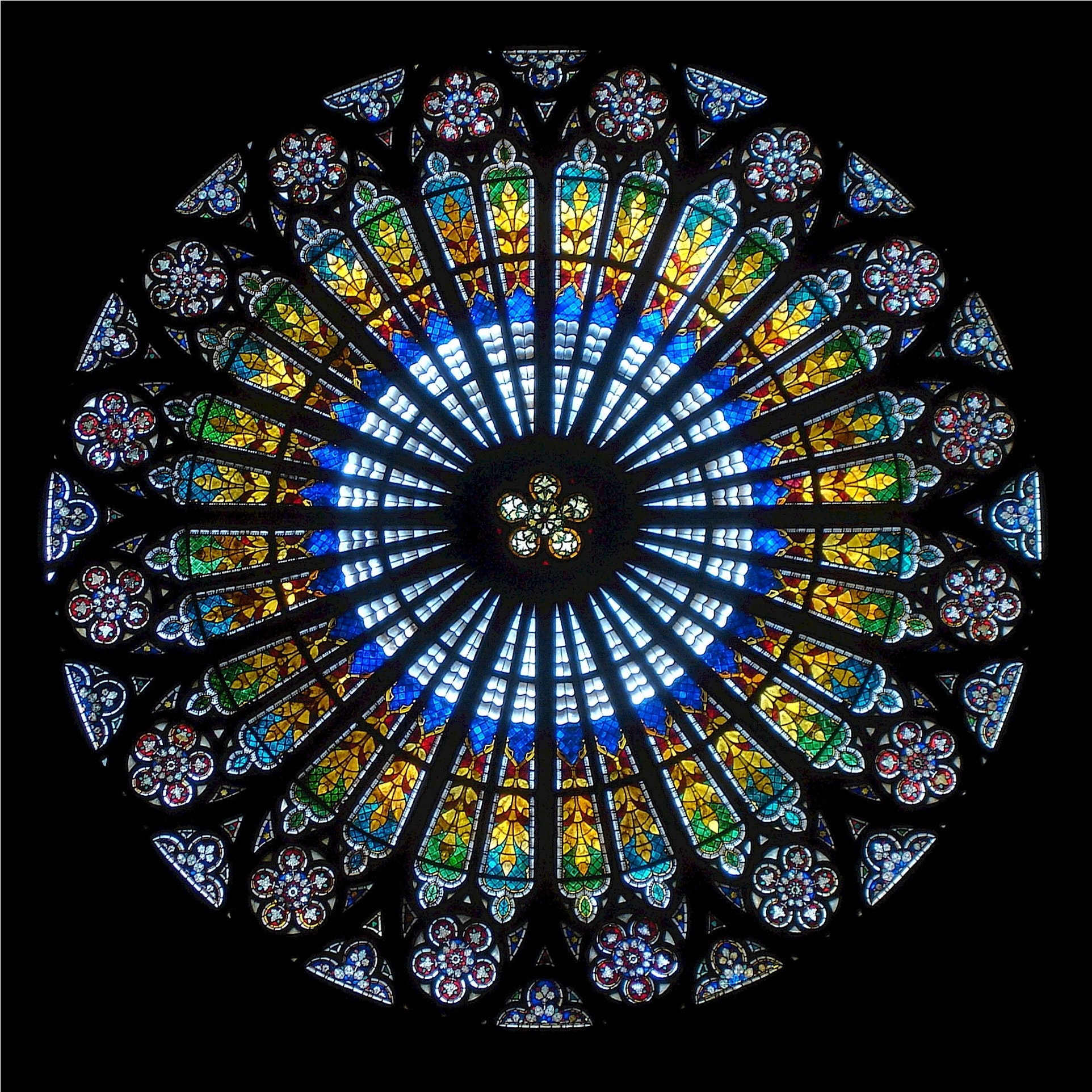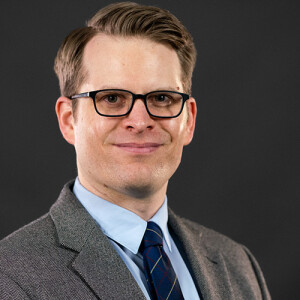After John Webster’s untimely passing in 2016, several responses were made considering the nature of his theological corpus. Webster left several volumes of works that range from compilations of journal article to smaller monographs, including his popular God Without Measure and Holy Scripture: A Dogmatic Sketch, and many acquaintances and burgeoning scholars have noted the incomplete and inaccessible nature of his planned magnum opus, a multivolume systematic theology. Nonetheless, writing on Webster’s life and contribution, Kevin Vanhoozer reflects that he had considered Webster “the greatest living theologian—the best theologian on earth.”[1] During his time of pilgrimage on earth Webster captured the theological imagination of theologians across the theological spectrum, and much of his influence is still felt through not only his writings, but the multitude of students whose lives he touched throughout his teaching career at Oxford, Aberdeen, and St. Andrews, as is apparent from the bountiful testimonial articles produced by the Carl F.H. Henry Center. Often, Webster’s chief contribution to the broader field of theology is his clarion call that theology should be ‘theological,’ a concept he advanced most directly in his inaugural lectures at Oxford entitled “Theological Theology” and which he often articulated via the memorable tautology “God is God.”[2]
What many don’t realize about Webster is the significant contribution he made to moral theology and theological ethics, especially within the realm of popular evangelicalism. Not only did Webster teach and mentor many evangelical students throughout his life and career, but he found himself as the honorary speaker at three evangelical institutions: the 2002 Day-Higginbotham Lectures at Southwestern Baptist Theological Seminary, entitled “Holiness”; the inaugural 2007 Kantzer Lectures on Revealed Theology, entitled, “Creator, Creation, and Creature: God and His World”; and the 2009 Hayward Lectures at Acadia Theological College entitled “Perfection and Presence.” It is in these lectures and through his students that Webster ingratiated himself to the evangelical community as a friend and ally in theological academia.
Upon the publication of John Webster’s Holy Scripture: A Dogmatic Sketch, however, Webster’s reputation among evangelicals took a slight hit. The reason for this may have been related to an analysis afforded by D.A. Carson, where Carson lampoons Webster for imprecision surrounding his definition of Scripture. In essence, Carlson accuses Webster of a low view of Scripture, allocating too little authority to the Word in place of a more functional ontology. Carson’s concerns may be the result of reading too much of Karl Barth into Webster: although profoundly influenced by Barth, in this work in particular, Webster is careful to distinguish between the function of sanctification of human speech in Scripture, the proper ordering of its dual-agencies, and the product of inspired literature and, as Michael Allen notes, may stand as an overreaching and “unfair” critique.[3]
Prying deeper: what is interesting about Webster’s work is its situation within his broader trajectories of thought. Toward the beginning of Holy Scripture, Webster laments the allocation of epistemic weight to the term “revelation,” which he feels is unwarranted.[4] It is interesting, then, that Webster considers revelation as the first of three steps in his dogmatic sketch of Scripture, followed by sanctification and then inspiration. The concept of revelation as a ‘confrontation’ of the individual is key here, a repeated refrain that seems to situate God’s Word as operating within the sort of philosophical dualisms Webster observed in Barth’s thought and hoped to overcome in his own.[5] In fact, this perceived deficiency in Barth’s doctrine of creation is ultimately what drove Webster toward a more classical theological route, where Webster is seen in the second half of his career gravitating towards the writings of Thomas Aquinas, the Reformed Scholastics, and Dutch Neo-Calvinists like Herman Bavinck.[6] It should not come as a surprise, then, that Webster’s later revision to Holy Scripture, entitled “Domain of the Word,” substitutes the epistemic category of “revelation” with “providence,” a subset and extension of the doctrine of creation that affords greater weight to God’s historical agency via the real agency of human speech.[7] Later, in a contribution to Victor Shepherd’s festschrift, Between the Lecturn and the Pulpit, Webster will more greatly affirm the ubiquitous authority of Scripture in its historical capacities, even affirming verbal plenary inspiration.
If Augustine is called the Doctor of Grace, Aquinas the Angelic Doctor, and Calvin the Theologian of the Holy Spirit, then Webster is most assuredly the Theologian of Holiness.
What is striking about Webster’s dogmatic sketch of Scripture, both later and earlier, is his focus on the concept of sanctification. Indeed, piecing these component parts together, Webster’s life-long project of theological theology could be said to be an expansion of a theological category many evangelicals would consider theologically-basic: holiness. The Theological Wordbook of the Old Testament defines the word for holiness (qadosh) as “consecration” or “apartness,” and Jonathan Edwards writes similarly: “…the moral rectitude and fitness of the disposition, inclination or affection of God’s heart does chiefly consist in a respect or regard to himself infinitely above his regard to all other beings: or in other words, his holiness consists in this.”[8] Simply put, “God’s own holiness is the sheer uniqueness of his being.”[9] It is this ordered and primal consideration of the nature of God, a Creator distinct and set apart from His creation, that drove Webster’s theological project, dominated his theological ethics, and motivated his homiletic. If Augustine is called the Doctor of Grace, Aquinas the Angelic Doctor, and Calvin the Theologian of the Holy Spirit, then Webster is most assuredly the Theologian of Holiness.
“Holiness”: The Day-Higginbotham Lectures
The intersections of God’s holiness and ours are drawn to the forefront in Webster’s 2002 Day-Higginbotham Lectures, “Holiness,” published the next year in a monograph of the same name. There, Webster sets out to construct “a trinitarian dogmatics of holiness,” which he feels “makes two claims”: “that God is holy as Father, Son and Spirit,” and that “the triune God is the Holy One in our midst; his holiness is a mode of relation to the creatures whom he sanctifies and calls to holiness.”[10] For Webster, the nature of God Himself, as holy in His Triunity, provides the grounds for “the sanctifying acts of God pro nobis [toward us].” As such, the work is divided into four parts, each constituting a lecture (or chapter): 1. The Holiness of Theology, 2. The Holiness of God, 3. The Holiness of the Church, and 4. The Holiness of the Christian.
The first chapter constitutes Webster’s opening salvo into the relationship between dogmatics as a discipline ‘set apart’ by God and for God: “theological thinking about holiness is itself an exercise of holiness,” “that delightful activity in which the Church praises God by ordering its thinking towards the gospel of Christ.”[11] It is thus “an exercise of holy reason,” whereby the mind, “disordered” by sin, is “transformed by the judging, justifying and sanctifying work of the triune God.”[12] The Trinity is known and manifest to the reason by way of revelation in Holy Scripture, which Webster calls “the authoritative canon,” regulative and determinative of theological thinking: “holy reason is exegetical reason … In the matter of God’s holiness, as in all matters, the fundamental theological responsibility is exegesis.”[13] As such, “because Holy Scripture is sufficient, holy reason finds there its limit,” Webster noting the important connection that sufficiency is an “essential corollary of its authority.”[14] Holy reason must be both mortified and vivified by the Spirit, directed to “its proper end” in God, an endeavor “undertaken in prayer,” “an exercise in the fellowship of the saints,” and an act of humility and “submission to the gospel.”[15] Quoting Jonathan Edwards, Webster holds the telos of holy theology is “a sanctifying of God’s holy name,” going on to cite Psalm 99:3 & Psalm 145:21.[16]
This leads Webster to discuss the Holiness of God. According to Webster, “God’s holiness is the holiness of Father, Son and Spirit.”[17] For Webster, it is this unique and personal reality that sets God apart and grounds His communicability with us: “For the Christian confession, the doctrine of the Trinity makes all the difference in the world, for that doctrine is at the heart of the Christian gospel, and so at the heart of the Christian understanding of nature of God and the manner of God’s relation to the world.”[18] Quoting Bavinck, he notes that this triune holiness is contained in God’s relationship with and “gracious turning” toward humanity, a “personal, moral relation.” As such, instead of distancing God from us, the Holy Trinity is the grounds for his communication and relationality—even His mercy—with us creatures, closing his lecture with Revelation 4:8 and a quote from Edwards.[19]
Webster then moves on to the church, in his third lecture calling attention to the church as a holy and sanctified reality dependent on the holiness of God in Christ. For Webster, the church’s holiness is essentially “alien,” and calls attention to the dependence of the people of God on the economy of the Trinity and the work of Christ.[20] Here Webster considers the special relationship between the invisible and visible church, observing that “the key question is not whether the Church is visible but what kind of visibility is possesses.”[21] Here Webster thinks he has an answer in confession of the church and the orientation of its practice toward the acts of the Trinity, submitting to the gospel and hearing the work and words of God: “The Church is holy as a hearing Church.”[22] Webster concludes: “the Church is holy as, day by day, it magnifies God and worships his name, ever world without end.”[23]
Evangelical freedom is the freedom that comes from not being finally responsible for my own being; by the mercy of God I am restored to know myself to be a creature in fellowship with my creator and saviour.
John Webster
In discussing the holiness of the Christian, this essentially “relational” aspect of holiness is extended through the church and to the individual, a “communication” that enters the Christian into fellowship with the triune God.[24] As such, Webster feels the biblical phrase “sanctified in Jesus Christ” (1 Cor. 1:2) provides the best basis for an account of individual holiness.[25] He latter re, again, Webster notes the distribution of the acts of the triune God: the Father electing, the Son saving, and the Spirit sanctifying, the latter providing the “whence” of what he calls “the miracle of human holiness.”[26] In this human nature is restored and sin is overcome: quoting Colossians 3:10, Webster uses cosmic language of renewal (anakainosis) and the “comprehensive reintegration” of the sinner into fellowship with God.[27] To this end he resources Calvin’s concept of double-grace, the immanent work of God in both reconciling and sanctifying, where the latter consists in the perpetual renovation of the character in the process of mortification and vivification.[28] According to Webster, this process of one of creaturely freedom, what he calls “evangelical freedom,” a freedom from the inhibiting powers of sin and toward fellowship with God in the realization of true creatureliness: “Evangelical freedom is the freedom that comes from not being finally responsible for my own being; by the mercy of God I am restored to know myself to be a creature in fellowship with my creator and saviour.”[29] Ending on a quote from John Owen, Webster then reflects on the relationship between holiness, love, and joy, noting the triune acts of Father, Son, and Spirit in fellowship with each other as they draw us “into righteous fellowship with the holy God” and closing with the benediction, “May it be so with us.”[30]
Conclusion
Webster was a theologian enamored with the holiness of God and what that means for our lives as creatures utterly dependent on while utterly distinct from Him. Refusing to consider this a mere paradox or self-contradiction, Webster believed with all his heart that God’s very nature as Father, Son, and Spirit was the answer to the quandaries of human existence and the alienation of sin via the grace of the gospel. God is the answer, because ‘God is God,’ and for Webster, this made the mercy of God and the gospel all the more beautiful. For many, Webster’s piercingly intellectual style coupled with his winsome zeal for the simplicity of gospel provided a unique appeal and helped direct others to emulate him as he sought to emulate Christ. As such, Webster’s writings are a valuable tool in the toolbox of the evangelical, and we shouldn’t be surprised to see more resourcing of Webster as the theological community reflects further on the Theologian of Holiness.
In a sermon on Isaiah 35 entitled “The Way of Holiness,” Webster writes,
Saints are what they are because of God. We haven’t begun to understand saintliness unless we see that behind the saints lie the infinite recesses of the life of God himself … Saints aren’t those who have got a flair for the life of religion … It’s what God does, because of who God is” … “a way of bearing testimony about something which is not me, a way of bearing witness to the holiness of God declared in the gospel and set before us in the coming of Christ and the sending of the Spirit.[31]
Let’s love God’s holiness like John Webster loved God’s holiness.
[1] Kevin Vanhoozer, “John Webster: A Testimonial,” Carl F.H. Henry Cetner for Theological Understanding, https://henrycenter.tiu.edu/2016/06/john-webster-a-testimonial/.
[2] John Webster, “Theological Theology,” in Confessing God: Essays in Christian Dogmatics (New York: T&T Clark, 2016); see his sermon “Creatures of Grace” in Christ Our Salvation: Expositions & Proclamations (Bellingham, WA: Lexham Press, 2020), 170; “Perfection and Participation,” The Analogy of Being. Invention of the Antichrist or the Wisdom of God (Grand Rapids: Eerdmans, 2011), 382. The concept is found in Eberhard Jüngel, God as the Mystery of the World, trans. Darrell L. Guder (repr.; New York: T&T Clark, 2014), 4. Webster may have picked such a tautology up from Jüngel, who had been the subject of his 1982 doctoral dissertation, Distinguishing Between God and Man: Aspects of the Theology of Eberhard Jüngel.
[3] Michael Allen, “Toward Theological Theology: Tracing the Methodological Principles of John Webster,” Themelios 41.2 (2016): 217–37. Special thanks to David Rathel for the attention to this debate.
[4] John Webster, Holy Scripture: A Dogmatic Sketch (New York, NY: Cambridge University Press, 2010), 12.
[5] See Webster, Barth 111-2, 138, 161; cf. Webster, Holy Scripture: A Dogmatic Sketch, 28-29.
[6] See Vanhoozer, “John Webster: A Testimonial”; Allen, “Toward Theological Theology.”
[7] “Domain of the Word,” in Domain of the Word: Scripture and Theological Reason (New York: Bloomsbury T&T Clark, 2012). See also “On the Theology of Providence” in God Without Measure: Working Papers in Christian Theology. Volume I: God and the Works of God (New York: T&T Clark, 2016).
[8] Jonathan Edwards, The End for Which God Created the World, in The Works of Jonathan Edwards (New Haven: Yale University Press, 1957-), 8:422 [1.1].
[9] John Webster, “The Way of Holiness,” in Confronted by Grace: Meditations of a Theologian (Bellingham, WA: Lexham Press, 2015), 170.
[10] John Webster, Holiness (London: SCM Press, 2003),1, 5.
[11] Holiness, 9.
[12] Holiness, 12.
[13] Holiness, 18, 19.
[14] Holiness, 20.
[15] Holiness, 23-27.
[16] Holiness, 29.
[17] Holiness, 32.
[18] Holiness, 36.
[19] Holiness, 47.
[20] Holiness, 62-63.
[21] Holiness, 71.
[22] Holiness, 72.
[23] Holiness, 76.
[24] Holiness, 77.
[25] Holiness, 78.
[26] Holiness, 79-83.
[27] Holiness, 85.
[28] Holiness, 87-89.
[29] Holiness, 93-94.
[30] Holiness, 98.
[31] Confronted by Grace, 171-3.

Excerpt — Towards a Clearer Understanding of Jonathan Edwards’s Biblical Typology: A Case Study in the ‘Blank Bible’
Dr. Cameron Schweitzer provides new insights into Jonathan Edwards’s often mischaracterized typology.

Owning Up to the Failures of our Theological Heroes
What can be done when you discover the sins of historical figures who have shaped your theology?

Jonathan Edwards and the Asbury Revival
Chris Chun and Chris Woznicki discuss the signs of true revival, signs of the work of the Holy Spirit, and why it is important to critically assess the characteristics of revival in a spirit of charity.




